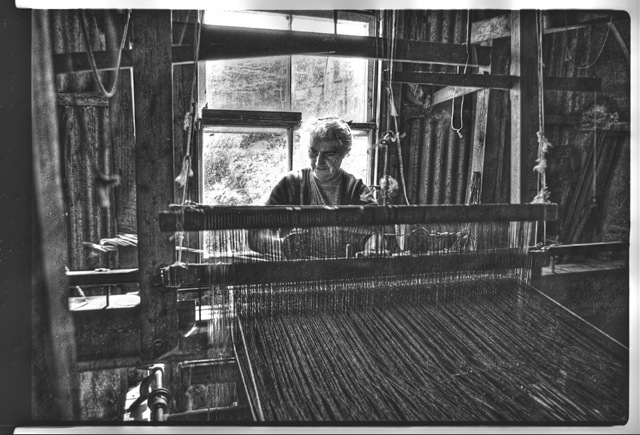A memory of the Island of Harris, Scotland,
Date: September, 1977.
Place: Harris, Outer Hebrides, Scotland.
Modus operandi: Enjoying the finest hospitality.
Weather: Sun to rain every few minutes.
Time: 2pm.
Gear: Leica M3, 35mm Summaron.
Medium: Kodak TriX
Me: Looking forward to becoming an American.
My age: 25
Just before setting out on a new life in the New World, I made a visit to the Hebrides off the west coast of Scotland.
My eldest sister had graduated from Dundee in the sixties and, as a schoolboy, I still fondly remember a visit to that old Scottish city where my youngest sister and I were presented with a Scottish Terrier. I also remember the people – dour, hard to get to know and not a fake in sight. Just like that Scottie. There’s an awful lot to like about the Scots – a nation we have to thank for single malts, Harris Tweed and golf. Well, two out of three’s not bad.
I took the ferry to one of the more southerly islands, South Uist, home of that peaty single malt scotch named Laphroaig, and gradually wended my way north by bicycle and ferry, getting soaked seemingly every 15 minutes as clouds scudded by, dropping their loads en route to the mainland.
The Scottish Tourist Board had this arrangement where, for 50p ($1.20 then) a night, you would get bed and breakfast and use of a local bicycle. One evening I was asked by the aged proprietors of one such B&B to join them and listen to old Gaelic songs on big 15 inch shellac 78s. Sad wailing sounds in perfect keeping with the desolate beauty of these islands. The next morning I recall coming down to eat with another young lady tourist and was dismayed to find that my plate was loaded up with twice as much food as the young woman’s. That impugned my sense of fairness. Questioning the proprietoress I was told in no uncertain terms “You’re a man, lad. You have to work the fields”. Blood pudding, rashers, sweet corn, potatoes, fried tomatoes, liver. No more questions from me. Just a full belly, set for the day.
My last stop was Harris, the northernmost island of the Outer Hebrides, shared with Lewis. Home of Harris Tweed. Truly a cottage industry. The hard wearing tweed is made in cottages and though power looms have now taken over, I asked around and found one of the last practitioners of hand loom weaving. More. This artisan had her own sheep from which she would shear and dye the wool then spin the yarn, before weaving it on the loom.
Marion Campbell
Address: Plockropool 8, Harris. Scotland.
The hospitality accorded me is still different from anything I can recall. The reason is simple. Ms. Campbell had very little in the way of possessions or wealth, yet insisted that I stay and enjoy tea, a delicious mix of home made scones, tea and other delicacies. Ever so tentatively I asked if I might take her picture at the loom and, of course, she agreed. This was after I explained to her that, accent notwithstanding, I was anything but English. That broke the ice! There’s no love lost between the Scots and the English over the past millennium or so. And as I was the son of refugees from an oppressed nation, a bond was formed.
I have been trying to process this snap for thirty years. Every decade it gets better as processing technology improves. Oh! if only I had had a fill in flash with me. Anyway, I now have the burned out highlights largely recovered and some vestige of detail in that wonderful, craggy face.

Marion Campbell, Harris,
Outer Hebrides, 1977.
I can still hear the clack of the shuttle as she threw it first one way, then the other. The memory of that afternoon’s wonderful hospitality will never fade.
Two months later I left London for good, a one way PanAm ticket in one hand, the Leica in the other, and made my new home in America. This is my fondest memory of what I left behind.